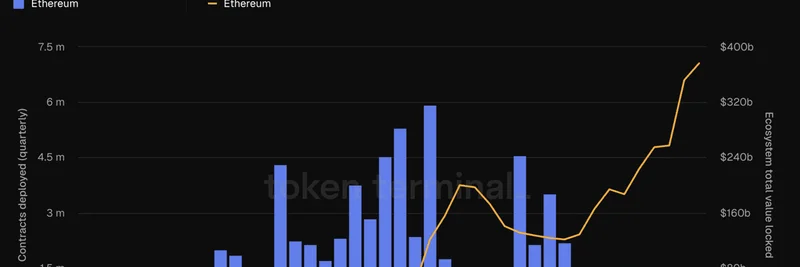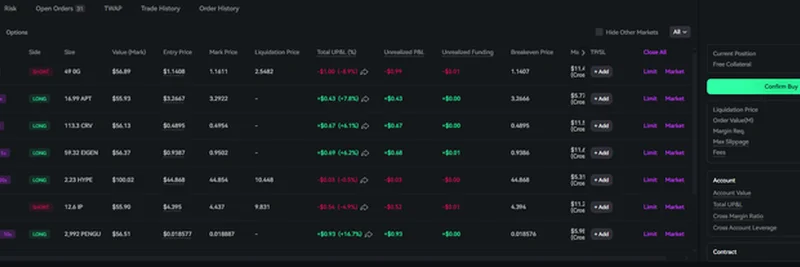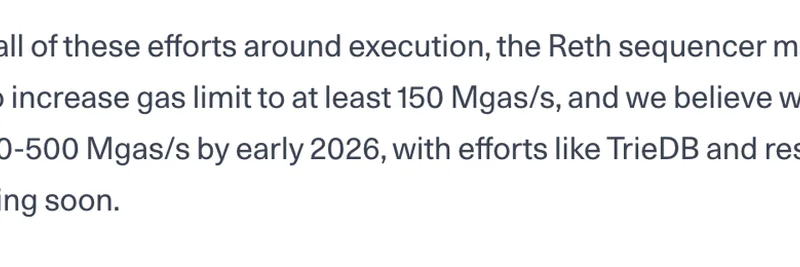Ethereum's journey in the crypto world has been nothing short of fascinating. Once the go-to blockchain for all things experimental, it's now solidifying its role as a powerhouse for serious, high-value finance. A recent analysis from Token Terminal breaks this down, showing how the network's total value locked (TVL)—that's the total amount of assets staked or locked in protocols on the chain—keeps climbing even as new smart contract deployments taper off.
The Big Picture: TVL Up, Deployments Down
Let's start with the data. Since 2021, the number of new smart contracts deployed on Ethereum has dropped sharply. These deployments are a key indicator of developer activity and fresh ideas hitting the blockchain. They peaked at around 5.9 million in Q2 2021 but have since fallen by 95% to just 310,000 in Q3 2025. Meanwhile, Ethereum's ecosystem TVL has grown from $120 billion to a whopping $379 billion over the same period.
This inverse trend suggests that capital is flowing into well-established decentralized finance (DeFi) projects rather than risky new experiments. Think of it like a maturing market: early on, everyone's throwing spaghetti at the wall to see what sticks, but now, the focus is on proven winners that handle big money securely.
Why the Shift? L2s and Alt L1s Take the Spotlight
So, where's all the innovation going? It's migrating to Layer 2 (L2) solutions and alternative Layer 1 (L1) blockchains that offer cheaper transactions and faster speeds. Chains like Base (an Ethereum L2) and Solana have become hotspots for new apps, especially those that need high throughput without breaking the bank on gas fees.
Take Solana, for example. Its ecosystem TVL has exploded from $4.3 billion to $37.3 billion since January 2024. A big driver? Platforms like pump.fun, which has raked in $866 million in fees by making it super easy to launch meme tokens. If you're into memes, this is huge—pump.fun has democratized token creation, turning viral ideas into quick trades and communities.
On the Ethereum side, Base isn't far behind. With $408 million in fees from projects like Aerodrome Finance, its TVL has jumped from $425 million to $11.7 billion. These chains are capturing the "breakout apps" of this cycle, leaving Ethereum's mainnet (L1) as the stable base for blue-chip DeFi like lending protocols and DEXs.
Looking Ahead: Could Upgrades Bring Back the Buzz?
History shows a link between contract deployments and TVL growth. That 2021 deployment spike led to Ethereum's all-time high TVL later that year. We're seeing similar patterns on L2s—Base hit 167.5 million deployments in Q2 2025, fueling its TVL surge.
Ethereum isn't standing still, though. The upcoming Fusaka upgrade in December could slash costs and boost transactions per second (TPS), potentially luring developers back to the L1. If it recaptures even a slice of the activity from Base or Solana, we might see TVL accelerate further.
For meme token enthusiasts, this matters because while Solana's pump.fun dominates quick launches, a more efficient Ethereum could blend high-value finance with fun, experimental memes. It might open doors for hybrid models where memes tap into Ethereum's liquidity while enjoying L2 speed.
In the end, Ethereum's evolution underscores a broader crypto trend: maturity doesn't mean stagnation. It's about building sustainable value, and with L2s handling the wild side—including those viral meme drops—the ecosystem as a whole wins. Keep an eye on these metrics; they're telling the story of where the next big opportunities lie.



